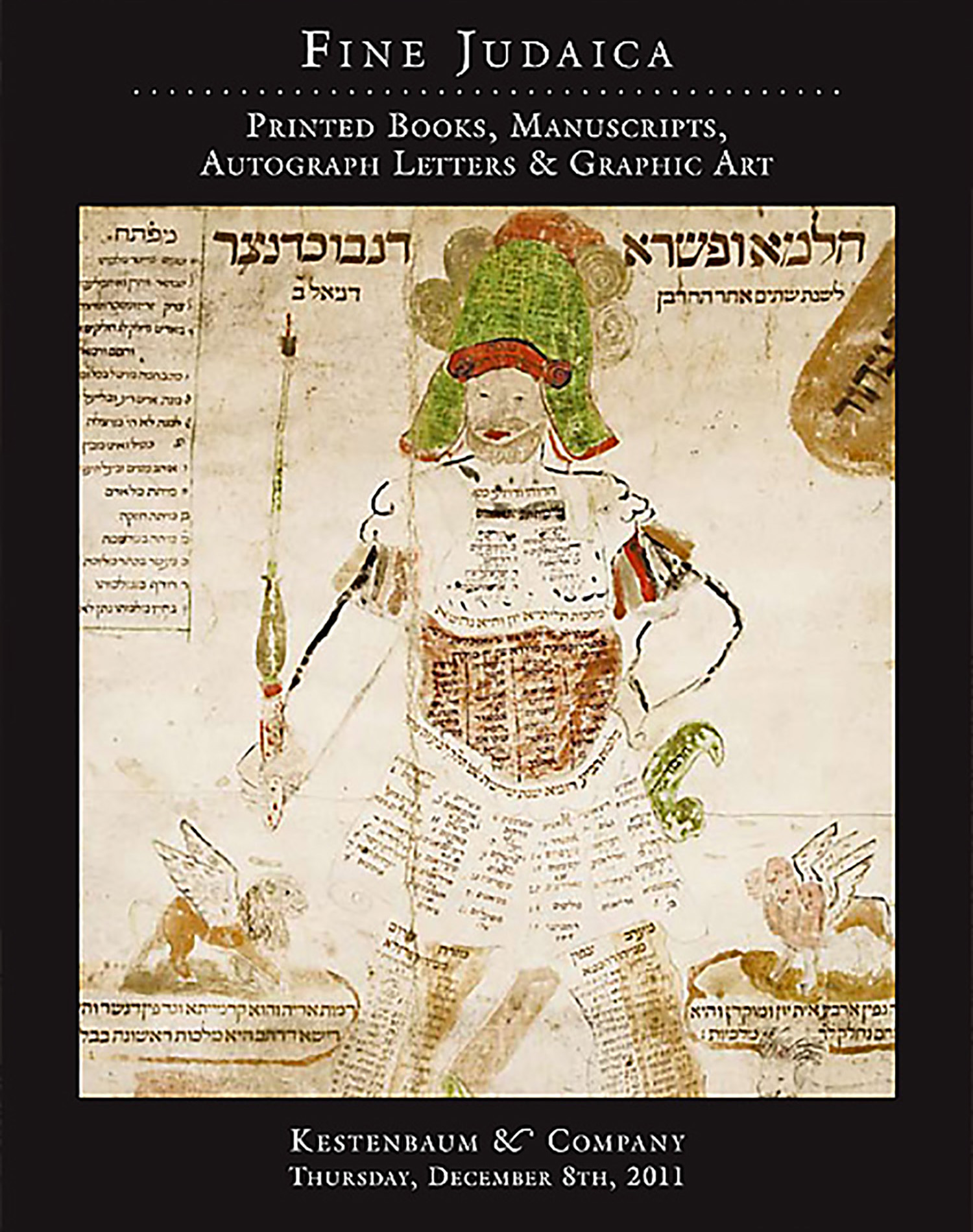ASCHKENAZI, JOSEPH OF SAFED ("R. Joseph HaTanna"). Collectanea of amulets (kame'oth), magical recipes (seguloth), folk medicine, etc.

AUCTION 53 |
Thursday, December 08th,
2011 at 1:00
Fine Judaica: Printed Books, Manuscripts Autograph Letters & Graphic Art
Lot 291
(KABBALAH).
ASCHKENAZI, JOSEPH OF SAFED ("R. Joseph HaTanna"). Collectanea of amulets (kame'oth), magical recipes (seguloth), folk medicine, etc.
(Safed): Late 16th-century
Est: $5,000 - $7,000
PRICE REALIZED $3,500
Discovery of a passage which reads "Amar Yoseph min Tzefath Hakothev" led a Rabbi Moshe Yehudah Hakohen Blau, a contemporary expert in medieval Jewish manuscripts, to surmise that this is an autograph manuscript of the kabbalist R. Joseph Aschkenazi of Safed (1525-77). However this assumption has yet to be firmly substantied. Son-in-law of R. Aaron b. Gershon Land, Av-Beth-Din of Posen. R. Joseph, who settled in Safed in the days of R. Joseph Karo, was referred to lovingly by his townsmen as "R. Joseph the Tanna" on account of his custom of regulalrly singing Mishnah by heart. But more to the point, R. Joseph was well on his way to producing a critical edition of the Mishnah, based on variant readings available to him. See EJ, Vol. III, cols. 727-28.
The first part of this manuscript is devoted to instructions how to write kame'oth (amulets) utilizing various divine names, as well as numerous names of angels. In addition, we find practical medical recipes to cure various ailments, such as a certain herb is suggested as a remedy for male impotence. Another genre of Jewish mysticism represented is the "she'elath chalom" or question posed before retiring for the night. Properly recited, the formula would guarantee that the question be answered in dream that night.
Also included are minor treatises, such as Sepher Shimush Tehilim, which employs each of the Psalms magically; followed by Alpha Betha, magical recipes arranged in alphabetical order. Some materials relating to the divine names, originate with the medieval kabbalist Isaac of Acre (Yitzchak de-min Akko), quoting from a "Sepher Rimon." One amulet is ascribed to MaHaRI"B, evidently an acronym for Mahari Beirav or R. Jacob Beirav, one of the great luminaries of Safed. One of the oddities of the manuscript is that on several occasions Latin characters are incorporated into the mystical formulae (See the final two leaves of the ms.) There is even a smattering of Lurianic Kabbalah of a purely theoretical nature, "kabbalah iyyunith," theoretical kabbalah, as opposed to "kabbalah ma'asith," practical kabbalah, which is the bulk of our manuscript. This includes Luria's "Derush ha-Ma'akeh," "Derush ha-Tzelem" and other less famous derushim of AR"I that were eventually incorporated into R. Chaim Vital's magnum opus Etz Chaim.
